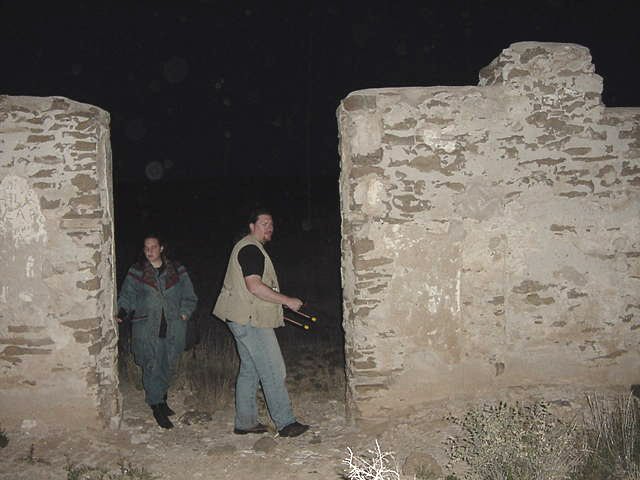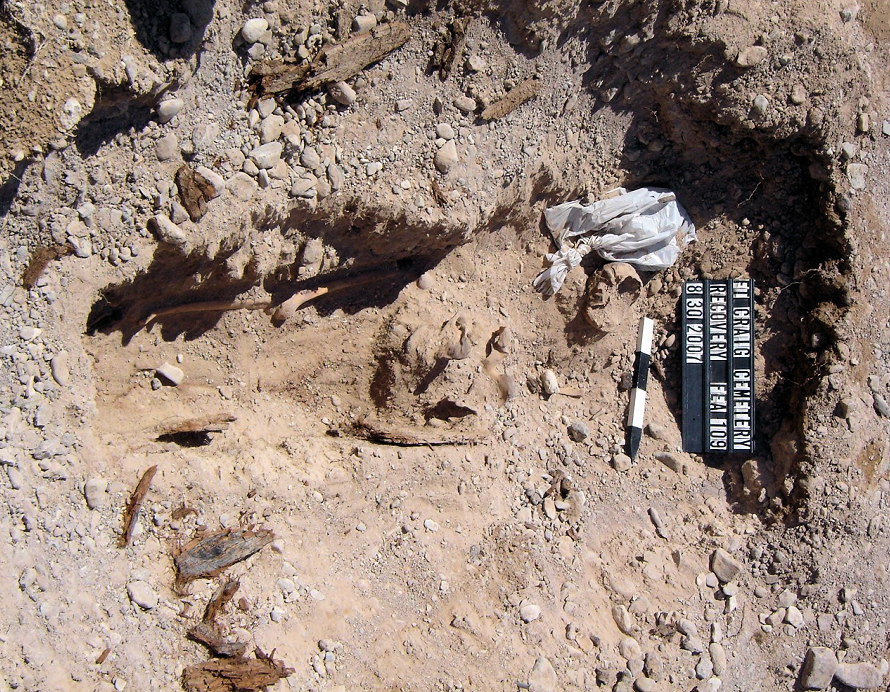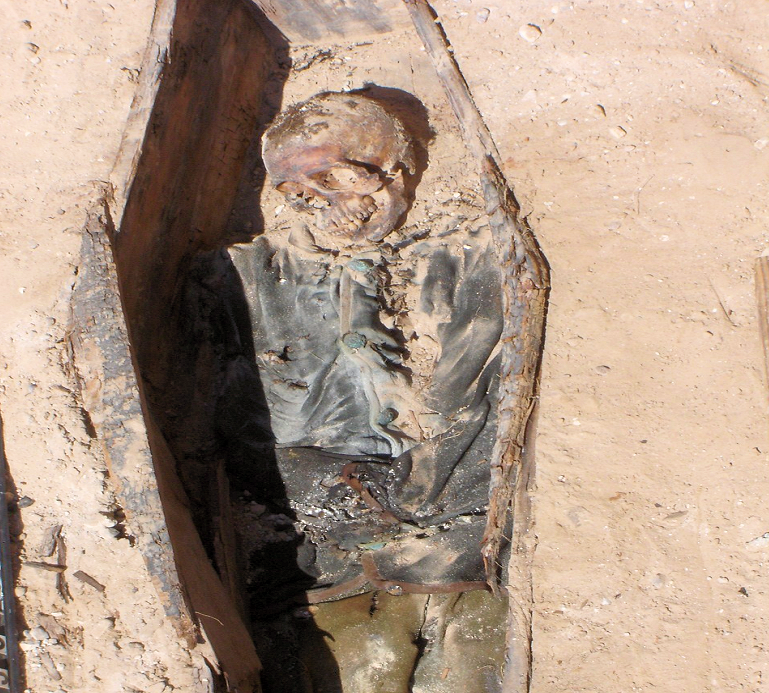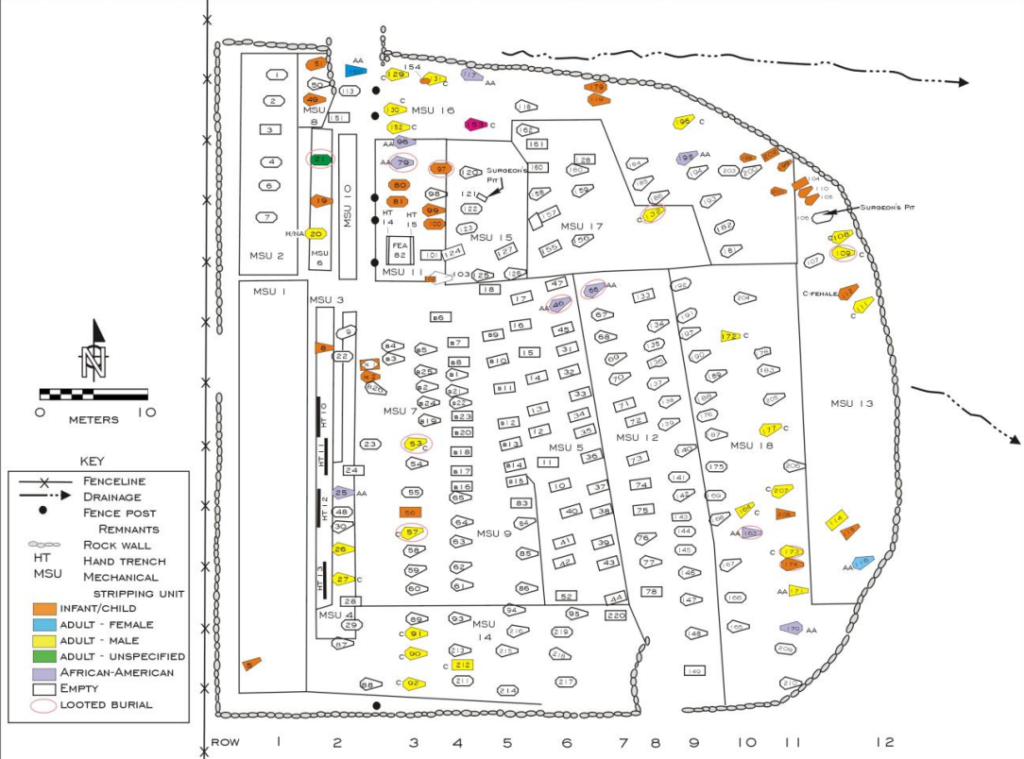In 2001, my team went to Fort Craig to investigate several paranormal claims that had been reported by the caretakers of the historic site. After hearing their accounts, my co-investigator, Bob, remarked that the described phenomenon was typical of a graveyard that had been desecrated. He was told that it was simply not possible, because the graves in the cemetery had been moved.
This seemed to be true. Records from the National Archives show that in 1878 the graves from the post cemetery were exhumed and re-buried at national military cemeteries at Fort Marcy in Santa Fe. But shortly after this, in 1880,Victorio and his Warm Springs Apache fled the reservation and began an extensive raiding campaign against the Army and civilians in New Mexico, Texas and Mexico. Fort Craig was re-garrisoned until 1886 when it was abandoned and auctioned off. One more time, the graves from the post cemetery were exhumed and re-buried, this time at Fort
Leavenworth, Kansas.

In November of 2004, Dr. Don Alberts, a professional historian, walked into the U.S. Bureau of Reclamation’s Area Office in Albuquerque. We had met Alberts the previous month at the Fort Craig
Conference, in Socorro, New Mexico. We had agreed to provide him with reports from Reclamation’s archaeological investigations at another Civil War era fort, Fort McRae. While at the office, Alberts, unsolicited, related to us an incredible story. He said that he knew a man, who subsequently turned out to be collector and amateur historian Dee Brecheisen, who had in his possession the “mummified” remains of a Buffalo Soldier, and that Brecheisen was keeping the remains in his house.
Alberts said that the well preserved remains, still dressed in a Civil War era uniform, were clearly African American due to the prevalence of kinky hair and patches of brown mummified flesh on the facial bones. The historian revealed that he had first seen the remains approximately twenty years ago, and knew that the remains had come from the cemetery of Fort Craig. According to Alberts, Brechheisen had admitted to digging up the remains in the early 1970s. Alberts ended by saying that Brecheisen was dying and he was urging him to give up the remains.

Following the conversation with the historian, the BLM decided to check the land status of the Fort Craig cemetery. Once it was established that the cemetery was on Reclamation land, they visited the site in late January of 2005, accompanied by an archaeologist from the Bureau of Land Management, the agency that had management responsibility for the ruins of Fort Craig.
Three things became apparent during the field trip. First, the discovery of several clearly defined looter holes indicated that the cemetery had been vandalized in recent years. Second, the BLM archaeologist repeated the mummy story and, furthermore, had known about the remains for approximately one year. Third, the BLM were informed that Brecheisen had died without indicating the whereabouts of the human remains.
In light of the fact that the cemetery had been vandalized on at least two or more occasions and human remains had been removed, Reclamation made the decision to hire an archaeological contract firm to conduct a geophysical survey of the cemetery. Despite the fact that Fort Craig had been abandoned in 1886 and the Army had conducted two sets of exhumations and re-interments at national military cemeteries (discussed below), it was possible that there might still be intact graves in the ground.
So, whether it was by pure coincidence or by the Bob’s assumption of the paranormal claims, it turns out that he was right.
By February of 2005, the mummy story had gotten the attention of Federal agents from the Bureau of Land Management, and a case file was opened in Albuquerque. Even though Brecheisen was dead, those remains were still unaccounted for and it was unclear whether or not any associated artifacts from the cemetery had passed into the possession of other individuals. What was clear was that Private Smith did not show up on any of the registries of soldiers from Fort Craig who were re-interred at either Santa Fe or Fort Leavenworth. The subsequent investigation and aftermath would result in the intersection of law enforcement techniques, historical research and archaeological excavations at the cemetery.
Check out the full report below for more fascinating details and what was discovered at the fort’s cemetery.

